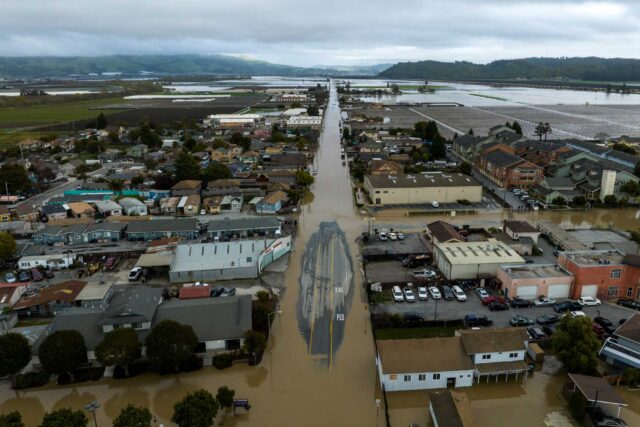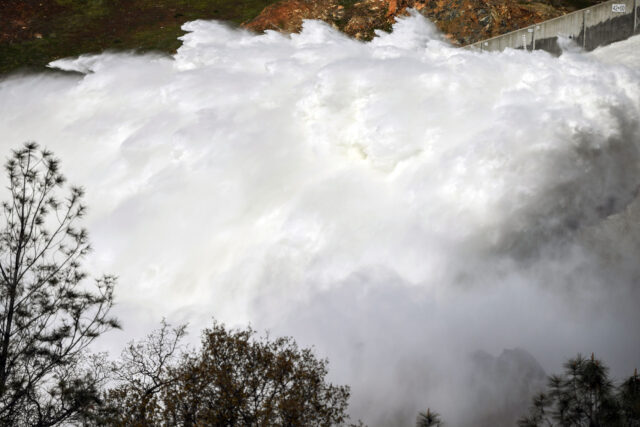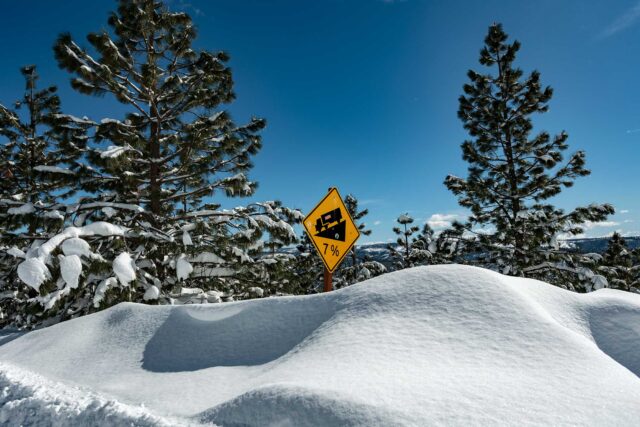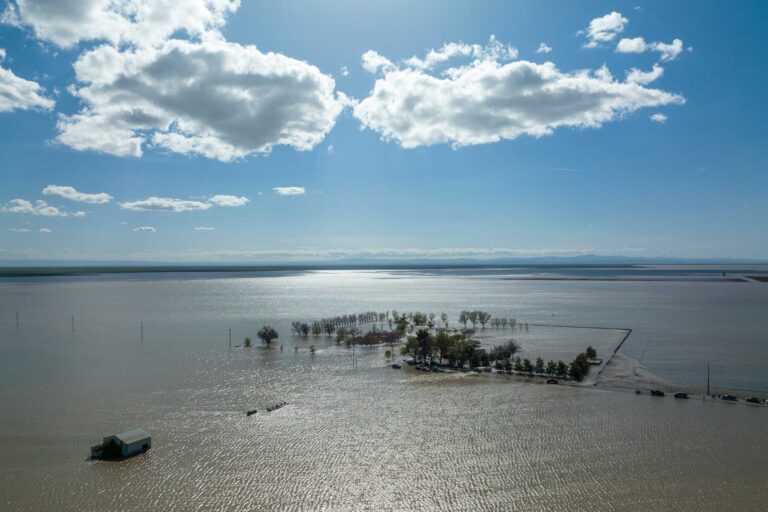One of California’s driest and warmest three-year periods on record just ended in an epic wet season. As snow melts and water demand skyrockets, it’s a good time to take stock. Did we sock away some water for the next dry period? Where are we most vulnerable to flooding, and what might we do better?
“We are having an extreme year, and it is embedded within a series of extreme years,” said PPIC Water Policy Center senior fellow Jeffrey Mount at an event last week. “I want everyone to remind themselves where we were a year ago. Last year at this time we were pretty freaked out about storage,” he said, referring to the low reservoirs and meager snowpack, which supplies about 30% of the state’s water.
The picture has changed thanks to a series of atmospheric rivers, but Mount emphasized how increasing precipitation volatility is challenging water management. “Increasing drought intensity makes wet year management much more important,” he said. “We routinely fail to store enough water during wet periods, and flood management is equally important as water supply management.”
A mingled sense of celebration and trepidation pervaded the expert panel discussion. “It has been a busy year” because of the rains, said Keith Lilley, deputy director of the Los Angeles County Public Works. While the county’s systems performed well, Lilley said that was in part because Los Angeles didn’t receive the same intense rainfall as other parts of the state.
Still, it was enough to help transform what had been a grim supply situation. Speaking of the county’s groundwater recharge basins, he said, “On average we normally capture about 200,000 acre-feet of water; this year we’ve captured about 388,000 acre-feet. That’s enough water for 3.1 million residents for a year in LA County. That’s good news.”
Lilley also touted the county’s Safe Clean Water Program, funded by Measure W, a voter-approved parcel tax from 2018 that pays for capturing and cleaning stormwater runoff to keep beaches, oceans, ponds, streams, and lakes clean. The county uses the water in parks and elsewhere to create recreation, shade, and habitat. And the program is popular, said Lilley: “People are asking for more.”
Grower and water consultant Sarah Woolf brought a needed perspective from the region most impacted by major flooding so far this year: the San Joaquin Valley. Woolf has been a relentless advocate for groundwater recharge on agricultural land, and one of the biggest frustrations in the first few months of the year was not being able to put floodwater into aquifers. “We began a process after 2017 to figure out alternatives for capturing that water in an efficient way. We did a lot of work preparing, a lot of that under the regulatory umbrella.” But diverting that water when unexpectedly heavy rains came in January proved challenging.
She says that the governor’s executive order in March helped pave the way for more recharge and allowed growers to gain some hands-on experience with it. Yet the executive order only goes through June 1. “In all likelihood we will need that to be longer, since we will be seeing so much water coming down through the summer months,” Woolf said. “We’re learning as we go here.”
Perhaps the most sobering words came from Tim Ramirez, who was first appointed to the Central Valley Flood Protection Board by Governor Jerry Brown in 2012. In the past, Ramirez said, “we’ve talked about the flood risks the San Joaquin Valley faces hypothetically. It’s not hypothetical this year.” The valley’s highly engineered rivers are not plumbed for big rainfall or snowmelt events, Ramirez said, and that creates a lot of problems.
“I was disheartened to get the notice that they were evacuating people from the Tuolumne River again, from the same place that had flooded in 1997.” Though there are more buffers where water can spill out onto floodplains now, he says, there’s still a lot of work to do. “This is a good reminder and a good test, but it’s a little disappointing to have the same problems we’ve had in the past. We need to accelerate pace and scale of work that’s going on.”
All three panelists agreed that growing precipitation whiplash is making water management more challenging. Lilley described how heavy rains on burn scars are washing huge amounts of debris into reservoirs, creating a costly challenge for his agency. Woolf suggested that creating a flood trigger to authorize recharge when floods begin could be a useful way to make the governor’s executive order permanent. Ramirez spoke of the need for improved flood protection standards. But tellingly, he also advocated for giving rivers the space they need.
“Rivers need floods: we know that. There’s no commercial or sport fishing for salmon this year in large part because of the drought of the last several years….Native species have evolved with these patterns and these rhythms, including floods. And people also need rivers [for] recreation areas and parks….If you do the math, that means people need floods,” he said. “Not catastrophic floods that are going to create loss of life and property, but we want to see that high water in the spring in particular because we know it’s part of the rhythm of these ecosystems.” More education, he said, and better flood standards could go a long way towards shifting attitudes.
We invite you to watch the event video.
Topics
Drought Floods groundwater infrastructure natural disasters San Joaquin Valley Water Supply Water, Land & AirLearn More

Commentary: Catastrophic Floods and Breached Levees Reveal a Problem California Too Often Neglects

Reservoirs Are Full, But Let’s Not Celebrate Just Yet



